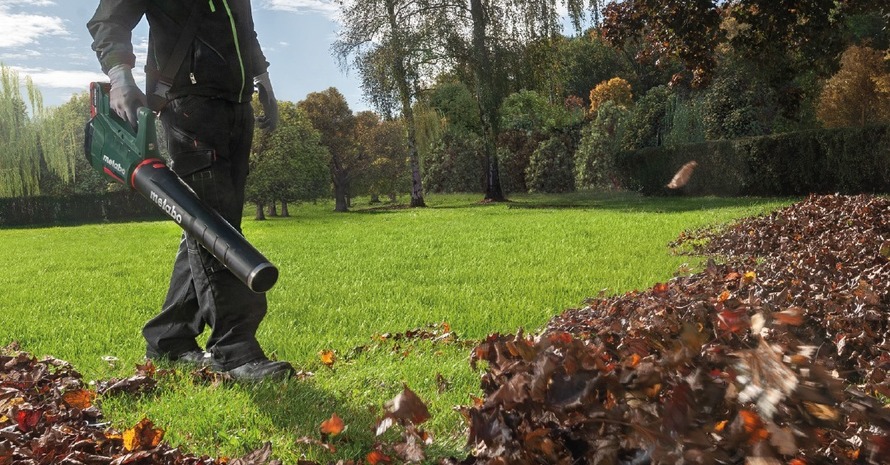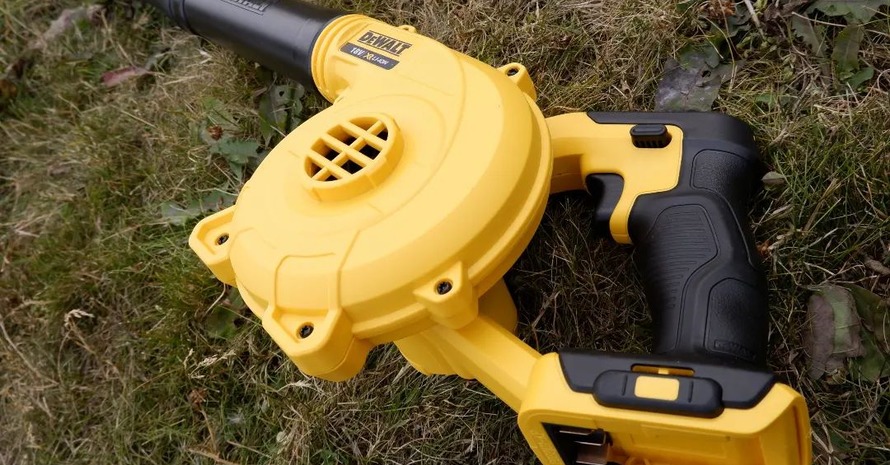Sweeping and raking can take too much time and effort if you want to keep your yard clean. That is why professional equipment is so popular: Leaf blowers help to remove leaves and debris from paths and lawns faster, and they also allow waste less energy on household duties. In this article, I explain “how does a leaf blower work,” “what are the six types of this tool,” and share some tips on productive work.
Guide on Operating a Leaf Blower
- Wait until the leaves get dry, and the wind ceases.
- Maintain and start a leaf blower.
- Hold the tool to one side, and direct the nozzle to the ground at a shallow angle.
- Don’t change the direction to avoid blowing leaves you have already removed.
How Does a Leaf Blower Work?
To get a deeper understanding of the tool you are going to use, let’s figure out which kind of equipment you are dealing with and what are its main features. Depending on this, you will manage to define how to operate it productively.
Types of leaf blowers
Construction and power source are the two parameters that can help you recognize to which type a piece of equipment belongs. Construction influences the weight of a tool, the type of landscape a leaf blower works best, and partially defines its capacity:
- A handheld instrument is mainly used to clean mid-sized sites;
- A backpack type suits big areas or if you just find holding all the weight of the tool on the back more convenient for you;
- A walk-behind machine is a professional landscaping blower, which has the biggest capacity.

Knowing the source of power is no less important for understanding the tool’s capacity. It also defines how difficult and expensive maintenance is and whether the tool is safe for the environment:
- Gas blowers are perceived as the most powerful but also the heaviest and the loudest. Gasoline causes more and more debates, and many cities even limit and restrict using this kind of leaf blower;
- Corded instruments closely follow the previous type run by gas considering their capacity. They are also relatively quieter and weigh less. However, wires limit your movements and maneuverability;
- Battery-powered tools are lightweight, portable, and quiet. Yet, batteries provide the shortest runtime, which also depends on the air temperature.

How to start, run, and store a leaf blower
Ways of starting and using the tool vary depending on the machine type. Here are some tips that will help you choose the most suitable tool before buying one:
- Starting a leaf blower. To start a corded leaf blower, you only need to plug it into the closest outlet and push a start button. Running a battery-powered instrument is also not difficult, you just need to notice if it is fully charged. Gas-powered machines require more effort, it is necessary to follow the level of fuel and oil;
- Running the tool. Regardless of the type of leaf blower, any tool spins the outside air with a leaf blower motor and an impeller. Spinning the air creates a centrifugal force and transfers it through the tube. The directed air flows from a small opening on a leaf blower and blows leaves and debris;
- Rules of storage. Before hiding a corded leaf blower, check if the wires are safe. Battery-powered machines need to be stored at about 15ºC (59ºF) to ensure lasting as long as they are supposed to. Never store a gas-powered instrument with liquids inside: Fuel and oil don’t age well and can damage the leaf blower engine over time.
FAQ on Working of Blowers
Here are some facts to consider when deciding whether you need a leaf blower and what is the best way to use it.
What is the benefit of a leaf blower?
Leaf blowing significantly cuts the time you spend cleaning sidewalks, driveways, and the lawn. Operating this kind of tool also requires less effort than working with a rake, so you don’t get tired before the job is finished.
What is the point of leaf blowing?
Using professional equipment is the easiest and the quickest way to clean any area not only of leaves but also of light debris. Some people use leaf blowers to collect leaves and use them as compost in the future.
Why are leaf blowers so annoying?
Despite these machines being useful, they are banned in many cities due to the noise pollution they cause. While an ordinary household application is about 70 dBA loud, some kinds of leaf blowers reach 100 dBA.
Leaf Blowers: Brief Summary of Pros and Cons
Leaf blowers vary by their construction and power source; these characteristics define other properties such as their capacity, weight, and circumstances a particular tool suits best. They help to keep any area clean, saving you a lot of time and energy for more pleasant activities. On the other hand, some types are considered a source of noise and air pollution.
Which type of leaf blower suits the household job best? Which type seems more reliable to you? Please, share your suggestions in the comments.

